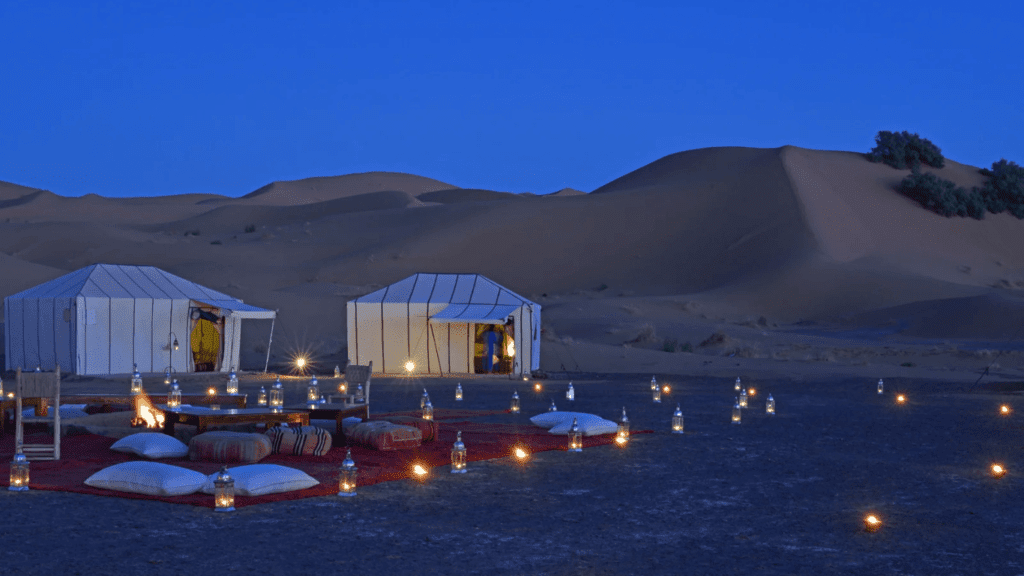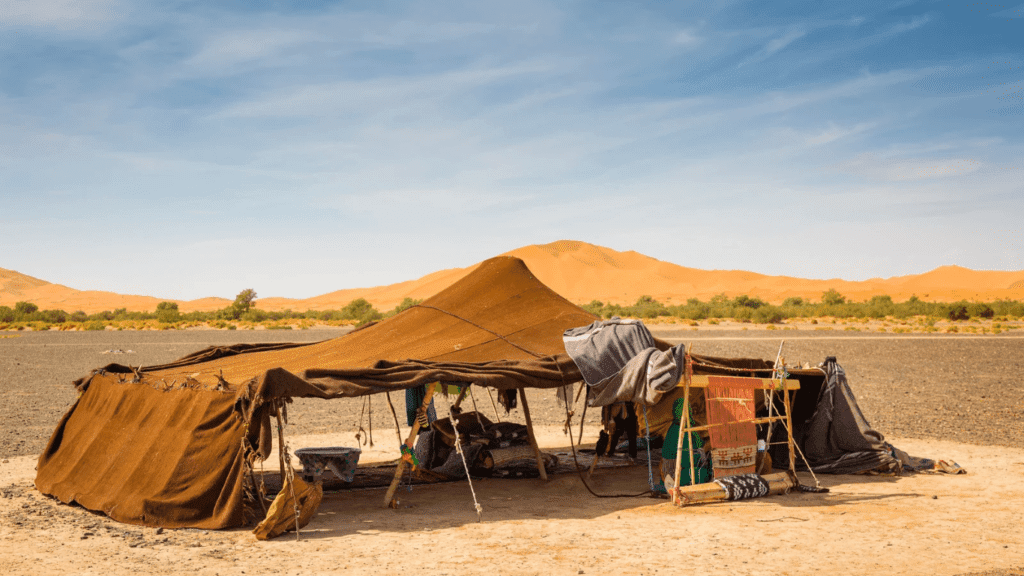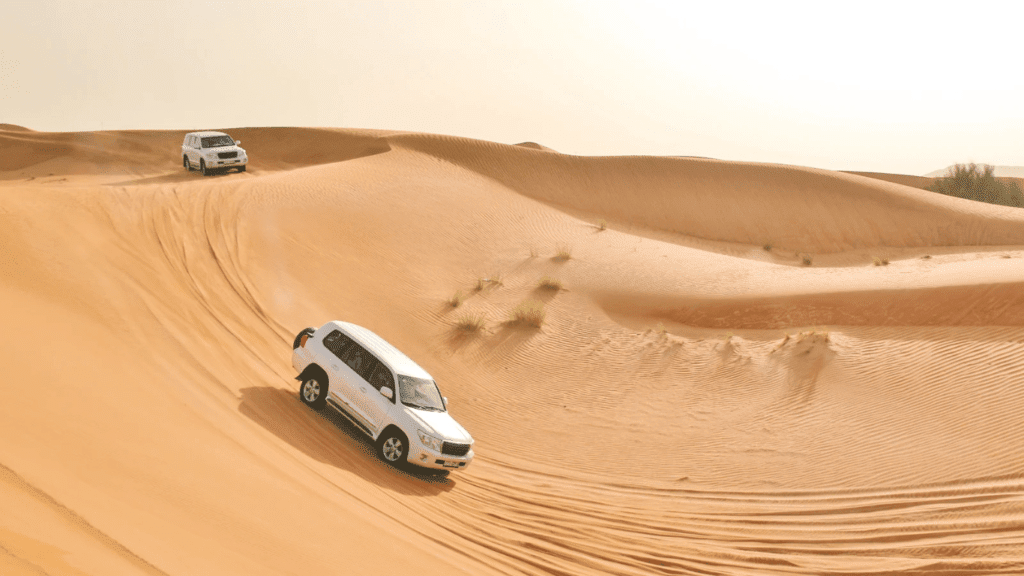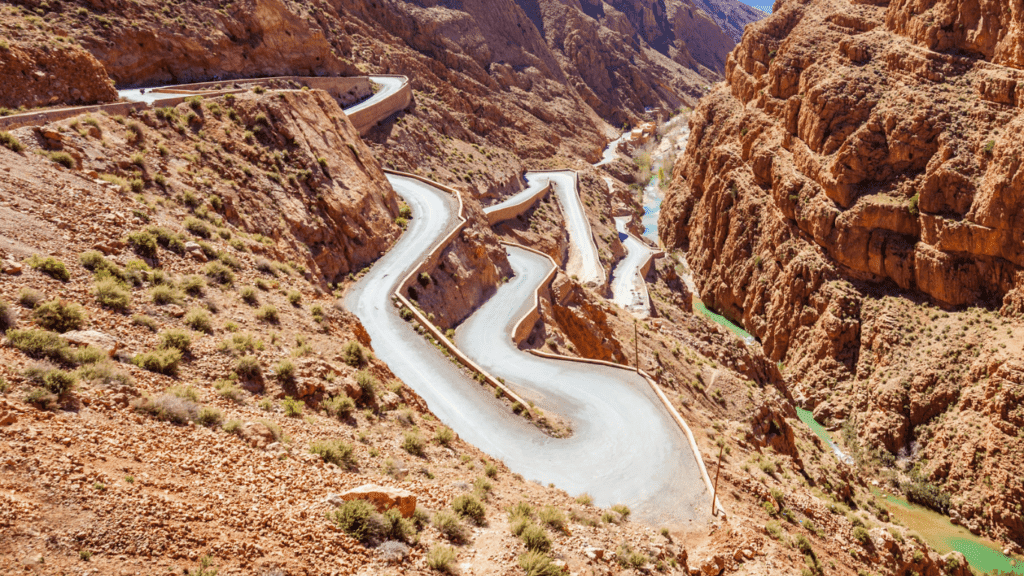- Get link
- X
- Other Apps
Morocco Travel

Located in North Africa, Morocco is a tourist hotspot full of cultural diversity and magnificent natural scenery. It combines Arabic, Berber and European elements, allowing every visitor to experience a unique cultural atmosphere. Spring and autumn (March to May, September to October) have pleasant weather and are the best time to visit, as you can avoid the high temperatures in summer and the cold in winter.
Before setting off, it's important to understand the local language (mainly Arabic and French), currency (Moroccan Dirham) and basic safety precautions. Preparing seasonal clothing and respecting local customs can make your trip smoother and more secure. This article will provide you with key travel information about Morocco, helping you to be fully prepared and enjoy an unforgettable trip to North Africa.
Must-visit cities and attractions in Morocco
Morocco is rich in culture and natural beauty. If you want to get to know this land in depth, several cities and attractions are definitely the focus of your trip. These locations not only showcase Morocco's unique historical features, but also provide a rich and colorful experience. Whether you want to visit markets, get close to nature, or experience the rich culture of ancient monuments, the following popular cities and places are worth visiting in person.
Marrakech: Old Town and Market Experience
Marrakech is one of the most representative cities in Morocco, and its ancient city is full of history. Jemaa el-Fnaa is the heart of the city. During the day, you will see all kinds of street performers and market vendors, performing a unique Arabian style; at night, it turns into a bustling night market with fireworks and delicious food, allowing you to experience the most authentic Moroccan life. The ancient city walls retain their medieval appearance, and walking through them feels like traveling back in time.
The souks in Marrakech are the best place to buy handicrafts, spices and traditional clothing. Don’t miss the Bahia Palace and the Koutoubia Mosque, landmarks with stunning architectural details that showcase the finest Moroccan craftsmanship.
Learn more about Marrakech itinerary recommendations: Detailed explanation of popular tourist attractions in Morocco
Chefchaouen: Beautiful scenery of the blue city
Chefchaouen is nicknamed the "Blue City" because the entire city is painted in various shades of blue. This color not only attracts countless photography enthusiasts, but is also a great place for travelers to relax. The winding alleys and walls interweaving white and azure create a dreamlike scenery, and every step you take in it is like a feast of colors.
In addition, Chefchaouen is surrounded by mountains and has fresh air, making it suitable for travelers who love nature and hiking. Whether you are walking on the streets bathed in morning light or wandering around the market in the afternoon, you can feel the tranquil beauty of the city.
Fez: an ancient city of cultural heritage
Fez is the oldest imperial city in Morocco and the core of its culture and religion. Its Medina (old city) consists of an intricate maze of streets that makes you feel lost in time. The streets are lined with traditional handicraft shops, especially leather products, ceramics and handmade textiles, all of which showcase the exquisiteness of handcraft art. Wandering through the city, listening to the hawking and prayers, Fez takes you on a deep exploration of what life was like a hundred years ago.
Fez's religious and academic status also makes it full of bookish atmosphere, and such cultural depth is hard to find in other cities.
Check out the Fez travel guide for more detailed information: 2025 Fez Medina detailed guide recommended
Morocco Travel

The Sahara Desert is a natural wonder that you must experience in Morocco. The endless golden sand dunes bring a stunning visual experience. Visitors often take jeep safaris to cross the undulating sand dunes and challenge their limits. At the same time, camel riding is the most classic way, allowing you to cross the desert like an ancient trade team and experience the realism of desert survival.
What’s even more special is that you can stay in a desert tent at night, look up at the starry sky, and feel as if time has stood still. The clean air is filled with starlight, which brings a tranquility and clarity that cannot be felt in the city.
For more information about Sahara Desert adventure, please refer to: Sahara Desert Travel Guide
These cities and places each have their own characteristics, and whether you are looking for cultural depth or natural wonders, you can find a satisfying answer in Morocco. Arrange your itinerary, follow the locals, and experience the charm of this land yourself.
Travel Preparation and Entry Information
When planning a trip to Morocco, it is important to have the right entry and preparation information. This will not only make your trip smoother, but also avoid unnecessary trouble in a foreign country. The following will help you make comprehensive preparations from visas, air tickets, currency payments to clothing packing.
Visa and flight information
As of the latest regulations in 2025, Taiwan residents can travel to Morocco without a visa for up to 90 days. Passengers must hold a passport that is valid for at least six months and must show proof of a return ticket or onward travel ticket upon entry. Additionally, proof of accommodation and sufficient funds for the trip may be required upon entry.
Traveling to Morocco from Taiwan usually requires a transfer in a major European or Middle Eastern city, such as Paris, Istanbul or Dubai. It is recommended to reserve at least 2-3 hours for connecting flights to cope with customs inspection and flight delays. Some airlines offer through tickets, which can reduce the hassle of luggage transfer and make your journey easier.
For detailed tourist visa application procedures and the latest policies, please refer to the Morocco visa-free information website: Morocco's latest tourist visa policies and application procedures in 2025.
Currency and payment methods
The official currency of Morocco is the Moroccan Dirham (MAD). Taiwanese travelers generally choose to exchange currency upon entry or locally. It is recommended to exchange a small amount of dirhams in Taiwan in advance for emergency use, and then exchange them in batches as needed when you arrive at the local location. It can be handled at banks and legal currency exchange offices in airports and cities, but the exchange rate and handling fees may vary slightly.
Credit cards are widely accepted in hotels, restaurants and some shopping malls in large cities, but cash is still the main method of payment in small shops, markets or rural areas. It is recommended to carry some cash when going out to facilitate small transactions and taxi rides, to avoid inconvenience caused by restrictions on credit card usage. In addition, pay attention to international ATM withdrawal fees and inform your bank in advance of overseas use.
Travel payment tips
- Bring multiple payment methods, such as credit cards, cash and mobile payments (supported in some cities).
- Different places may only accept Moroccan Dirhams, so avoid the confusion of carrying foreign currency.
- Avoid carrying too much cash and focus on storing it in a dispersed manner for safety.
Clothing and luggage preparation
Morocco Travel

Morocco's climate is changeable, and it is important to choose appropriate clothing according to the season and geographical location. The temperature in spring and autumn is comfortable, and you can wear light clothing during the day, such as short-sleeved T-shirts and casual pants. However, the temperature difference between morning and evening is large, so it is recommended to bring a thin jacket or long-sleeved clothing.
If you plan to camp in the desert or explore the Sahara, remember that the temperature difference in the desert is large at night, so you need to bring warm clothing such as fleece jackets or down jackets. During the day, it is advisable to wear breathable, sun-proof long-sleeved shirts and hats to prevent direct exposure to strong ultraviolet rays. At the same time, it is advisable to wear comfortable and well-fitting shoes when doing activities in the city, because the ancient city area has many cobblestone or gravel roads.
In addition to clothing, it is recommended to prepare:
- Sun protection products, such as sunscreen and sunglasses.
- A lightweight backpack or waist bag is convenient for carrying water and personal belongings.
- Basic medical kits and personal hygiene items.
With such careful preparation, you can freely experience the various landscapes of Morocco, from busy markets to tranquil deserts, making your journey smoother and more secure.
Cultural etiquette and safety reminders
Morocco is a country dominated by Islam, and its cultural etiquette is deeply influenced by religion and tradition. When traveling, in addition to appreciating the scenery and local customs, travelers must also pay attention to local cultural practices and safety recommendations to avoid accidentally violating taboos and enjoy a comfortable journey. The following points are the key points you must pay attention to when traveling.
Clothing and Behavior
Morocco's culture is relatively conservative, especially in small towns or religious places, and your dress should respect local values. Travelers are advised to choose modest and not overly revealing clothing. Women are advised to wear long-sleeved tops and long pants or skirts and avoid sleeveless or miniskirts. Men should avoid wearing sleeveless vests and shorts and try to keep themselves clean.
In terms of behavior, avoid making overly intimate gestures in public, which may be considered impolite locally. When entering religious sites such as mosques, please first find out whether outside visitors are allowed to enter and follow instructions to observe quietness and respect. In addition, when interacting with locals, being polite and patient and using polite language will make communication smoother.
For more details on Moroccan culture and etiquette, see Morocco Travel Tips: Respect local customs and beliefs.
Dietary taboos and tipping culture
Morocco is a Muslim country with strict dietary regulations. Muslims do not eat pork or any food containing pork, and alcoholic beverages are restricted in some areas, especially during religious festivals. Travelers are advised to avoid bringing in or consuming such items in public to avoid offending local residents.
Tipping is common and encouraged when dining in Morocco. Restaurants, taxis, tour guides and hotel waiters generally expect a tip of 5% to 10%. Although it is not mandatory, giving a reasonable tip shows respect and gratitude and helps to establish good interactions. Passengers are advised to carry loose paper with them so that they can pay when appropriate.
To learn about local dietary taboos and tipping habits, please refer to Morocco travel tips and things to know.
Travel Safety Guidelines
Most areas of Morocco are safe to travel to, but there are still a few safety points that should not be ignored. Tourists should be especially careful to guard against pickpockets, especially in crowded markets or transportation hubs. It is recommended to carry a close-fitting bag, avoid putting valuables in pockets or outer pockets of a backpack, and stay alert at all times.
Try to avoid going to remote or unsafe areas alone, and choose well-lit and crowded places when moving around at night. When taking public transportation, identify legal taxis or make an appointment with a tour guide to avoid taking illegal or unknown transportation.
Keep your communications open and carry local emergency contact numbers with you. You can also find out the locations of the nearest medical centers and police stations. Pay more attention to your surroundings while traveling and do not trust invitations from strangers. These are simple but effective ways to ensure your own safety.
For more information on Morocco travel safety, please refer to Morocco Travel Precautions.
The above cultural and safety reminders can help you avoid misunderstandings and accidents when traveling in Morocco and make your journey smoother and more enjoyable. Giving yourself some basic preparation and respecting local customs is the best way to respect others and protect yourself.
Recommended travel itineraries and experience activities
Morocco has a rich and diverse culture and natural scenery. In addition to visiting famous attractions, you can also choose itineraries and experience activities that suit you when traveling. Whether you like in-depth cultural exploration or seek adventure and the challenge of nature, Morocco can satisfy you. Next, we will introduce you to several popular itineraries and special activities, which can be planned according to different days and interests to make your journey organized and fulfilling.
Classic Cultural Tour Route (6th to 10th day)
This route is suitable for travelers who want to savor Morocco's history and culture. Focusing on classic cities such as Fez, Marrakech and Chefchaouen, we arrange visits to ancient towns, museums and traditional craft markets.
- The ancient city of Fez is the core area of Moroccan culture. Its maze-like streets are filled with century-old handicraft shops and specialty food stalls, making you feel as if you are traveling through time and space.
- Marrakech's Jemaa el Fna Square is not just a bustling market, but also a microcosm of local life, with colorful performances and food stalls at night.
- Go to the Blue Old City of Chefchaouen to experience the quiet alleys and unique architectural colors, and appreciate the charm of the fusion of local craftsmanship and culture.
During this period, you can arrange to visit local museums, such as the Museum of Moroccan Folk Art in Marrakech, to gain a deeper understanding of the development of local art. Traditional craft markets such as leather dyeing workshops and metal craft workshops allow you to witness the hand-made process with your own eyes and better appreciate the spirit of Moroccan craftsmen.
Planning suggestions: The pace of travel should not be too fast. It is advisable to visit 2 to 3 attractions per day to deeply experience the local culture and avoid the fatigue of visiting too hastily.
To learn more about [Morocco Classic Cultural Route], please refer to: Popular Travel Routes in Morocco.
Nature and adventure experience route (5 to 7 days)
Morocco has a diverse range of natural landscapes and this route is designed for travelers who love outdoor adventures and natural landscapes. Key destinations include the Sahara Desert, the Atlas Mountains and the vast Mediterranean or Atlantic coastlines.
- For the Sahara Desert Adventure, you can choose to ride a camel across the sand dunes, stay in a desert tent at night, and experience the starry sky and tranquility without light pollution. It can be paired with a jeep for off-road driving and to challenge harsh terrain.
- Hike in the Atlas Mountains and experience stunning mountain scenery and traditional Berber villages. Suitable for travelers who like mountaineering and experiencing local mountain culture.
- Coastline activities offer surfing, beachcombing and even seafood dining, especially in quaint towns like Essaouira.
This route is compact and suitable for you who have plenty of energy and a high passion for exploring nature. Safety equipment and appropriate clothing for outdoor activities are essential. This trip is challenging and rewarding, and will allow you to experience the vastness and ruggedness of Morocco, which is different from the city.
For more detailed adventure itineraries, please refer to: 2024 Morocco Nature and Adventure Routes.
Specialty Food and Market Exploration

Moroccan cuisine is an integral part of the cultural experience. The local markets (Souk) are not only places for shopping, but also a great place to taste traditional flavors and learn about daily life.
- Recommended traditional dishes : Tagine, Couscous, Moroccan mint tea and Baklava.
- Famous markets such as the Jemaa el Fna market in Marrakech and the diverse handicraft stalls in the Medina of Fez, where you can find leather products, weavings, spices, silver jewelry and other specialty goods.
- You can come across authentic Moroccan food stalls in the market and try handmade flatbreads, olives, nuts and various skewers.
A visit to these markets is a feast for the taste buds and senses. It is recommended to prepare some small cash to facilitate bargaining and shopping with vendors. During the experience, you can communicate more with the stall owners and learn a lot about the stories of ingredients and dishes.
If you want to learn more about Morocco’s markets and food culture, refer to: Morocco’s Special Food and Market Guide.
Carefully plan various itineraries and combine cultural and natural experiences to make your trip to Morocco not only rich and diverse, but also allow you to truly experience the most moving customs of this land.
Conclusion
Morocco has a rich cultural heritage and magnificent natural landscapes. From the blue city of Chefchaouen to the bustling souks of Marrakech, each place is full of unique charm. Proper preparation of visas , transportation and clothing, as well as respect for local culture and customs, are the keys to a smooth journey.
As Morocco continues to be a popular tourist destination in Africa in 2025, staying updated with the latest safety information and travel tips will help you explore this land with greater peace of mind. Plan your own Morocco adventure with travel tips and local resources.
Cherish the discoveries and touches of every journey, and let the beautiful memories of Morocco become an unforgettable page in your life. I wish you a safe and smooth journey and look forward to you sharing more wonderful stories
- Get link
- X
- Other Apps

Comments
Post a Comment